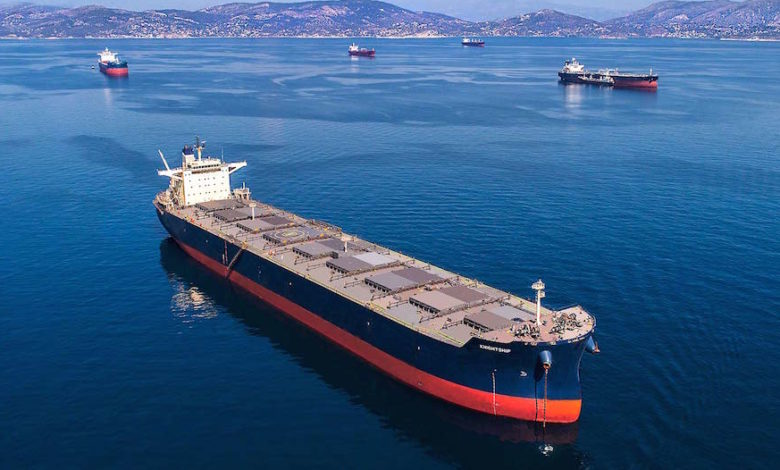
Tim Jones, president of French shipbroking house Barry Rogliano Salles (BRS), has questioned the role of shipbrokers’ input into the revamped Baltic Exchange.
Writing a foreword to BRS’s 120-page annual shipping markets outlook, Jones discussed how the Baltic indices, now owned by the Singapore Exchange (SGX), have changed in the past couple of years.
Jones reckoned the indices now reflect less and less shipbrokers’ objective opinion of the state of the market, but rather more what clients are showing to the market.
SGX has made a number of changes at the Baltic since taking it over at the end of 2016, which in turn has seen at least two rival dry bulk indices launched this year.
Jones, who next month celebrates 38 years at BRS, also used his foreword to look at how the big end users in dry bulk trades were increasingly taking control of the sector.
Direct fixing using indices is now the majority of dry bulk transactions, he stated. On the major ore routes, which represent over 50% of the dry cargo market, BRS estimates less than 10% is fixed through brokers or disclosed. The CIF (Cost, Insurance and Freight) net back prices of commodities are even more dependent on the indices.
“Price disclosure that used to be done by establishing bids and offers on the market is no longer necessary as the indices serve as price references. End users can now price their freight (and the landed cost of their commodity) on their own ships without going to the market,” Jones wrote, adding: “ Could this be the reason why a majority of the dry cargo orderbook in 2017 constituted orders by, or for, end users and traders? Traditional owners are having a harder and harder time justifying investing against returns based on purely indices.”
Jones concluded by warning that dry bulk was potentially headed to an “uneven playing field” where the giants are able to control the total commodity chain.

A telling observation, Tim. When producers try to control shipping, it does not end well for shipowners. I think traders are more apt to sell off their shipping investments, but the damage done by over ordering by both traders and producers can last a long time. I was not aware that DIRECT fixing based on the indexes had grown to such a high level.
Brs is baltex panelist. Brs and all panelists brokers, is it difficult to stop feeding the beast (ie Baltex)?
Would it be be difficult to set up a faithfull plateform where all fixtures done are combined and finally set up our own brokers index without going though baltex?
Also while baltex willing to put off handies from the weighted BDI, according to mr Jones declaration, it should be the Capers being off the weighted Bdi. As apparently only 10% of the deals have a chance to be reported publicly. While nowadays probably 95% of the handies fixtures are done via at least 1 brokers. (90 95 98 100%? I don’t know ( Does BRS have this kind of info?), but l would be naturally tempted to say the smaller the ship size the more often brokers are involved-putting aside Coaster market).
Finally it’s a very interesting analysis from mr Tim Jones (least l can say, l’ve only been 10 yrs in the shipping biz) but maybe we (market players) need to think forward and find a way to adress the issue raised by these market changes.
Let’s read between the lines. Clearly Tim is trying to delegitmize the baltic since its SGX purchase in an attempt to put forward an alternative. I am not suggesting there isn’t room for an alternate shipping index and concur that the old and new weighted format questionally represent the market but the sooner a company like BRS who has seen their Alphaliner container weekly and report become industry standards, comes forward and shows their hand at least then we can compare with the current norm.BRS clearly have the resources to put an index together, through their ownership of AXS MARINE, the only question is who do they intend to receive market rates from and will it really make a difference?